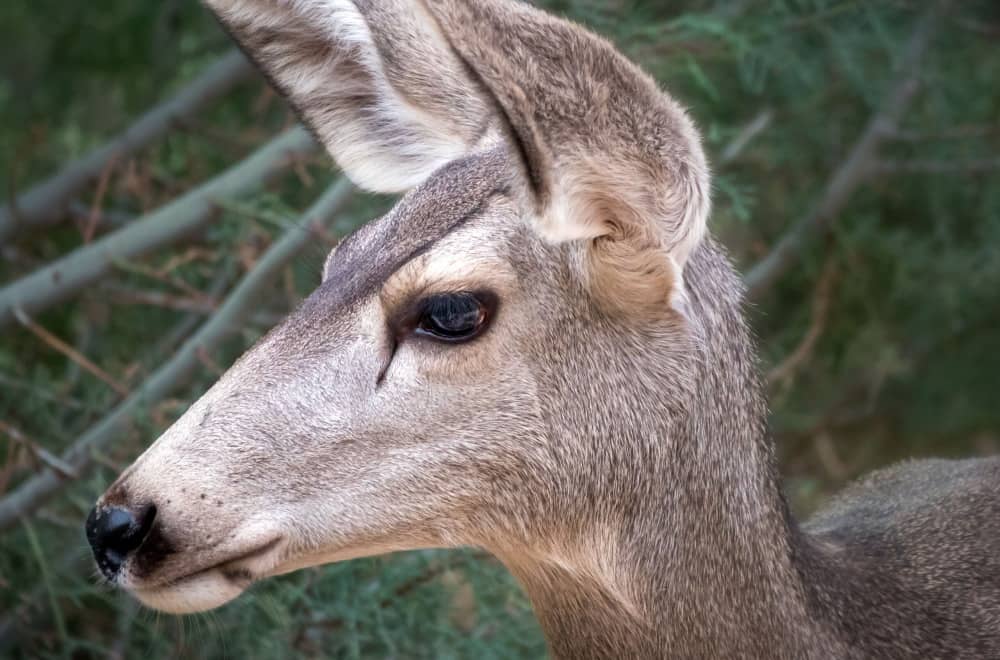Situations and Solutions
“Orphaned” fawn: Fawns can appear orphaned as they are often left alone for long periods of time. Mothers do not abandon their babies. Anyone that comes upon a fawn should leave it alone. The mother will return when she feels it is safe to do so, sometimes not until after dark. Do not linger long with the fawn as the mother will not return if she sees you. Only if the fawn is obviously injured or the mother is seen dead nearby should it be taken to a wildlife hospital.
Fawn in the yard: The mother may have left the fawn and will return for it soon, or the fawn may have wandered into the yard and is not able to find an exit. Make sure the doe can get into the yard. If your yard is fenced, place the fawn just outside the fence, and the mother should return for it soon. The doe will reclaim the fawn despite the human scent. Only handle the fawn as a last resort and if it is small enough to carry. If the fawn is fast and large, don’t chase it. Wait for the mother to return. Phone a wildlife hospital for advice if the mother does not return or the fawn is wandering and crying loudly.
Fear that deer may attack children or pets: Deer are shy by nature, but may become more aggressive during mating season. If the deer feels trapped in a yard or other area, stay away from it and let it take its time leaving. Deer may leap in any direction while trying to escape.
Deer eating shrubs or garden: As people have moved into deer habitat and planted vegetation, the deer have adapted to eating landscaped plantings which has brought them into conflict with humans. “Fence or Share” is the general rule. Deer fencing should be at least 2.4m high. If fencing the entire area is too expensive, try fencing around certain plants that attract them. Other solutions include motion sensor water sprinklers, bags of human hair hung in the area, or scattering or hanging strong smelling soap. Things that move will frighten the deer such as scare eye balloons and kites. A very effective deterrent is Bobbex, and can be sprayed on decorative plants to prevent deer from eating them. It should not be sprayed upon plants intended for human consumption as it tastes awful. Alternatively, many people choose to share their yards with deer and other wildlife.
Natural History
Members of the deer family in Alberta include the White-tailed Deer, Mule Deer, Caribou, Elk, and Moose. The White-tailed Deer can weigh as much as 200 kg when fully grown and has a greyish brown coat in summer but turns slightly reddish in winter months. Its name comes from the white underside of its tail and the patch of white on its rump. The Mule Deer is identified by its tail, completely black on the top but white underneath, and its oversized ears. Bucks can weigh between 110-230 kg, while females (does) are considerably lighter.
In both species the bucks begin growing antlers in the spring and are finished growing their rack by September, just in time for mating season. After mating season the bucks shed their rack in January or February and go without a set until new velvet-covered stubs begins to sprout in May.
The main predators of deer are mountain lions, coyotes, and wolves. Today however, the loss of habitat and increases in human population, automobiles, hunting, and domestic dogs destroy an estimated 400,000 deer annually.


